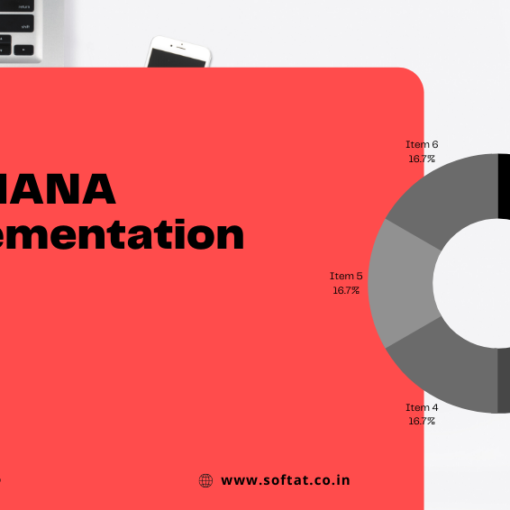Introduction:
SAP EDI is a technology that enables businesses to exchange electronic documents with their suppliers, customers, and partners in a standardized, computer-to-computer format. With the help of SAP EDI, businesses can streamline their operations, reduce manual data entry errors, and increase overall efficiency. In this blog, we will explore SAP EDI in detail, including its benefits, how it works, and how to implement it.
Benefits of SAP EDI:
Improved Data Accuracy: One of the biggest benefits of SAP Electronic Data Interchange is improved data accuracy. By automating the exchange of data between systems, manual data entry is eliminated, reducing the risk of errors and increasing the accuracy of information. This can lead to more informed decision-making and reduced costs due to errors.
Increased Efficiency: SAP EDI enables businesses to exchange data quickly and easily, reducing the time and effort required for manual data entry and increasing overall efficiency. This can result in reduced processing times, lower costs, and improved customer satisfaction.
Better Collaboration: SAP EDI enables businesses to exchange data with their partners in real time, providing a more efficient and effective means of collaboration. This can improve communication, reduce delays, and increase the speed of business processes.
Enhanced Data Security: SAP EDI uses secure, encrypted data exchange methods to protect sensitive information during the transmission process. This ensures that confidential data is kept secure, reducing the risk of data breaches and protecting businesses from security-related issues.
Improved Supply Chain Management: SAP EDI can automate many of the processes involved in supply chain management, such as order placement, invoice processing, and shipment tracking. This can result in improved supply chain management, reduced costs, and improved customer satisfaction.
Increased Data Visibility: SAP EDI provides businesses with real-time visibility into their supply chain and business processes, enabling them to monitor their operations more effectively and make informed decisions. This can lead to increased productivity, improved decision-making, and reduced costs.
Increased Agility: With SAP EDI, businesses can respond quickly to changing market conditions and customer needs, enabling them to remain competitive and agile. This can result in improved customer satisfaction, reduced costs, and increased market share.
How SAP EDI Works:
SAP EDI (Electronic Data Interchange) is a system that enables the electronic exchange of business data between different organizations. This system enables businesses to automate many of their manual data entry processes, reducing the risk of errors, and increasing efficiency.
Here is an overview of how SAP Electronic Data Interchange works:
Data Mapping: The first step in implementing SAP EDI is to map the data that needs to be exchanged between systems. This involves defining the structure of the data, including the format and content, to ensure that the information being exchanged is consistent and accurate.
Communication Setup: Next, the communication channels between the systems need to be established. This involves defining the protocols, message standards, and transmission methods that will be used to exchange data between the systems.
Data Translation: Once the data mapping and communication setup have been completed, the next step is to translate the data into a format that can be understood by the receiving system. This involves transforming the data into a standard format, such as EDIFACT or X12, to ensure that the data is consistent and accurate.
Data Transfer: After the data has been translated, it is ready to be transferred between the systems. This can be done through various communication methods, such as direct data exchange, or through a Value Added Network (VAN) that provides secure and reliable data transfer services.
Data Processing: Once the data has been received by the receiving system, it is processed and stored in the relevant databases. This involves validating the data, checking for errors, and updating the relevant databases.
Monitoring and Reporting: The final step in the SAP Electronic Data Interchange process is monitoring and reporting. This involves monitoring the data exchange process to ensure that it is working as expected and generating reports to provide visibility into the data exchange process.
SAP EDI provides a range of benefits to businesses, including improved data accuracy, increased efficiency, better collaboration, enhanced data security, improved supply chain management, increased data visibility, and increased agility. Whether you are looking to automate your manual data entry processes, or improve your supply chain management, SAP Electronic Data Interchange is a powerful tool that can help you achieve your goals.
Have you interested in SAP & Oracle Consulting? then click here
Implementing SAP EDI:
Implementing SAP EDI in your business can be a complex process, but it is an investment that can provide significant benefits in terms of efficiency and accuracy. The following steps can help you get started with SAP EDI:
Assess Your Business Needs: Start by evaluating your business needs and the processes that would benefit from automation.
Determine Your EDI Requirements: Consider the Electronic Data Interchange formats, communication methods, and security requirements that are most appropriate for your business.
Choose an SAP EDI Solution: There are several SAP EDI solutions available, including both standalone products and integrated solutions. Choose the solution that best meets your needs.
Map Your Business Processes: Map out the processes involved in exchanging data with your suppliers, customers, and partners, and determine how these processes can be automated with SAP EDI.
Test and Implement: Once you have chosen your SAP Electronic Data Interchange solution, test it thoroughly and then implement it in your business. Be sure to provide training and support for your employees, as well as ongoing monitoring and maintenance to ensure continued success.
Is IDoc an EDI?
Yes, IDoc (Intermediate Document) is a specific type of Electronic Data Interchange (EDI) used in the SAP ecosystem. EDI is a standard format for exchanging business documents electronically between different computer systems, allowing seamless data communication between business partners.
IDoc is the format used for data exchange within the SAP environment and is a specific implementation of EDI. It is a structured data format that enables the transfer of business data between different SAP systems or between SAP and non-SAP systems. IDocs can be used for various purposes, such as transmitting purchase orders, sales orders, invoices, delivery notes, and other business-related information.
IDocs play a crucial role in integrating different SAP modules and facilitating data exchange between different components of an SAP system, ensuring smooth communication and consistency across various business processes.
In summary, IDoc is a type of EDI format used exclusively within the SAP environment, while EDI is a broader concept that encompasses various standards and formats used for electronic data exchange between different systems and organizations.
Conclusion:
In conclusion, SAP Electronic Data Interchange is a system that enables the electronic exchange of business data between different organizations. This system provides benefits such as improved data accuracy, increased efficiency, better collaboration, enhanced data security, improved supply chain management, increased data visibility, and increased agility. By automating manual data entry processes and streamlining data exchange between systems, SAP EDI can help businesses to reduce costs, improve decision-making, and remain competitive in a rapidly changing market. Whether you are looking to improve your data accuracy, increase efficiency, or enhance your supply chain management, SAP EDI is a valuable tool that can help you achieve your goals.





